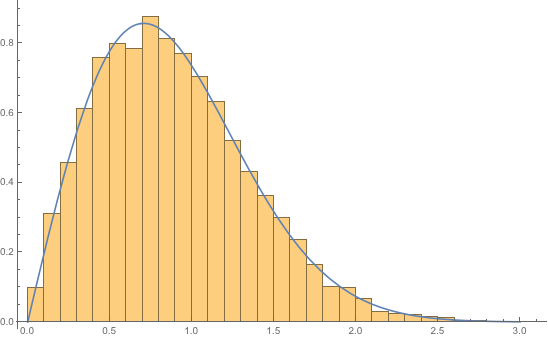It's best to proceed step by step. Consider $$W_i = g(X_i) = \sqrt{X_i}, \quad i = 1, 2, \ldots.$$ Then $$\Pr[W_i > W] = \Pr[\sqrt{X_i} > w] = \Pr[X_i > w^2] = 1 - w^2, \quad 0 \le w \le 1.$$$$\Pr[W_i > w] = \Pr[\sqrt{X_i} > w] = \Pr[X_i > w^2] = 1 - w^2, \quad 0 \le w \le 1.$$ Consequently, $$\Pr[Y_n > y] = \Pr[\sqrt{n} W_{(1)} > y] = \Pr[W_{(1)} \ge y/\sqrt{n}] = \prod_{i=1}^n \Pr[W_i > y/\sqrt{n}],$$ where $W_{(1)} = \min\{W_1, \ldots, W_n\}$ is the minimum order statistic of the root-transformed uniform $X_i$s. Then the rest is straightforward computation: $$S_{Y_n}(y) = \Pr[Y_n > y] = (1 - y^2/n)^n,$$ hence in the limit as $n \to \infty$, the survival function becomes $$S_{Y_\infty}(y) = e^{-y^2}, \quad y > 0,$$ and the asymptotic density is $$f_{Y_\infty}(y) = 2ye^{-y^2},$$ which implies $$Y_\infty \sim \operatorname{Weibull}(k = 2, \lambda = 1) \sim \operatorname{Rayleigh}(\sigma^2 = 1/2);$$ i.e., Weibull with shape $2$ and scale $1$, or equivalently, Rayleigh with scale $1/\sqrt{2}$. This result is supported by simulation, using $10^4$ realizations of $Y_{100}$ as shown below.

